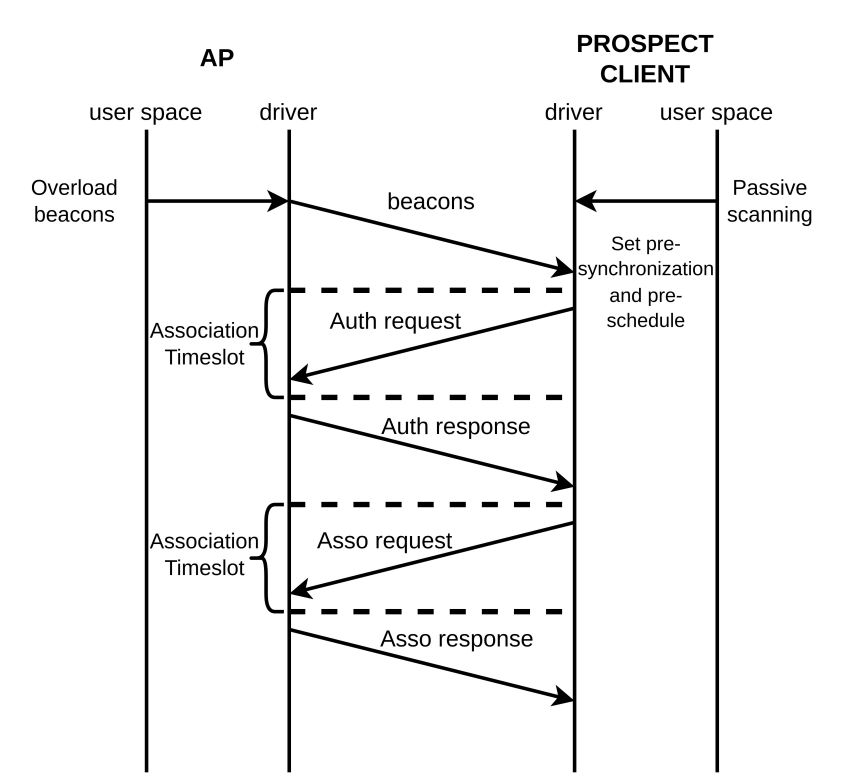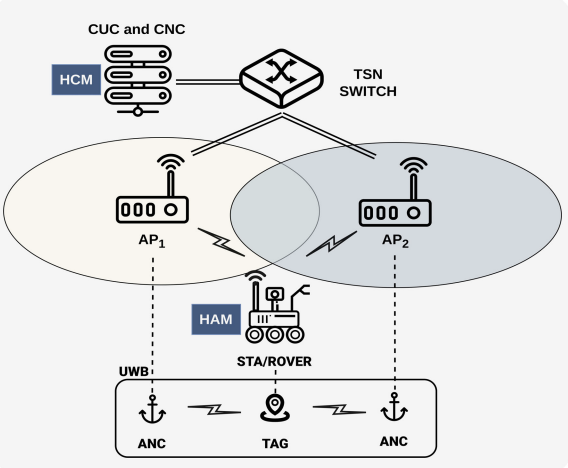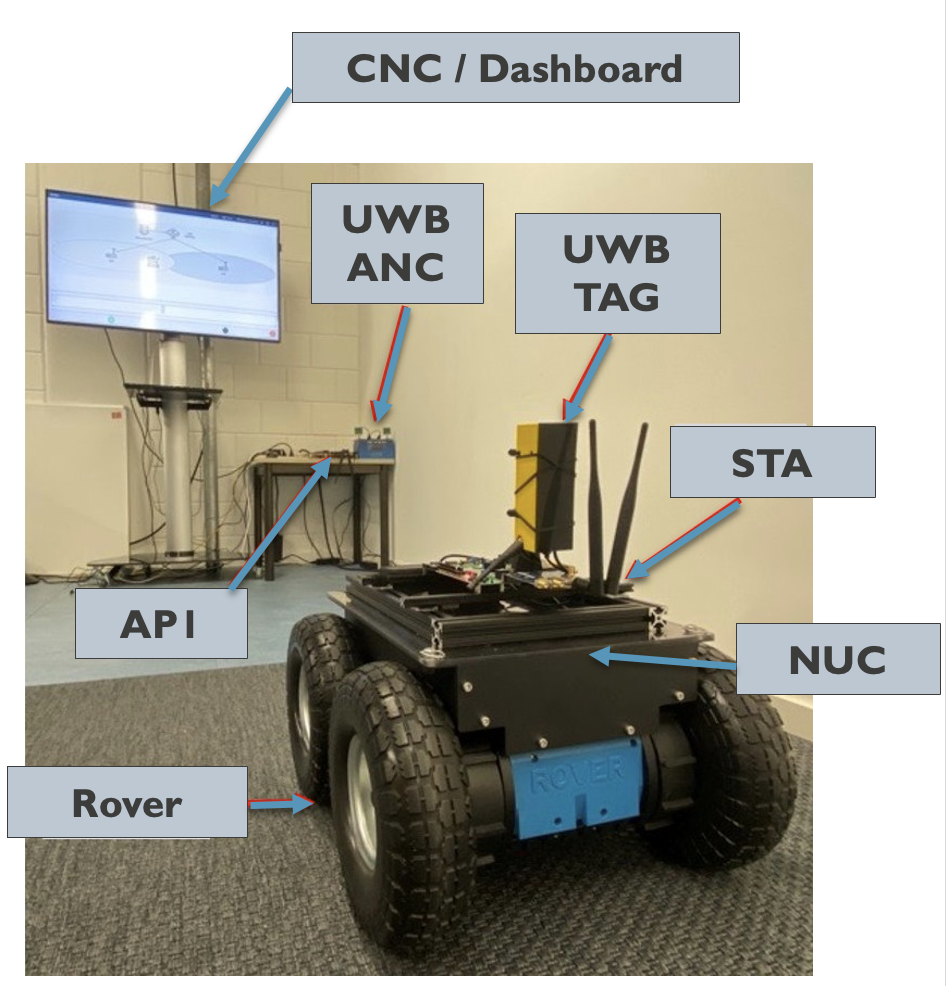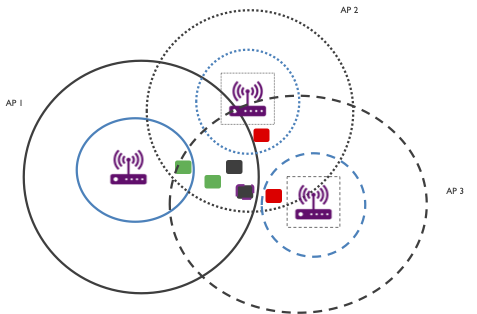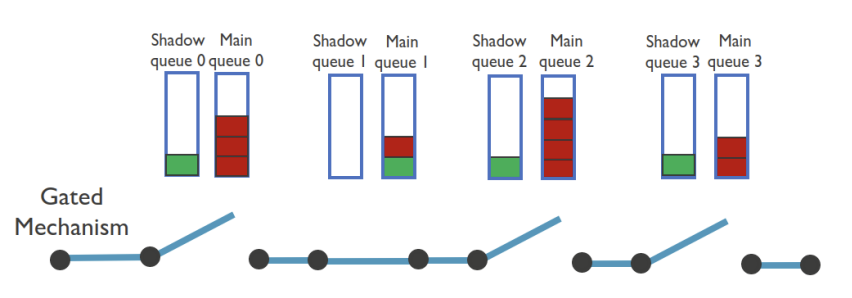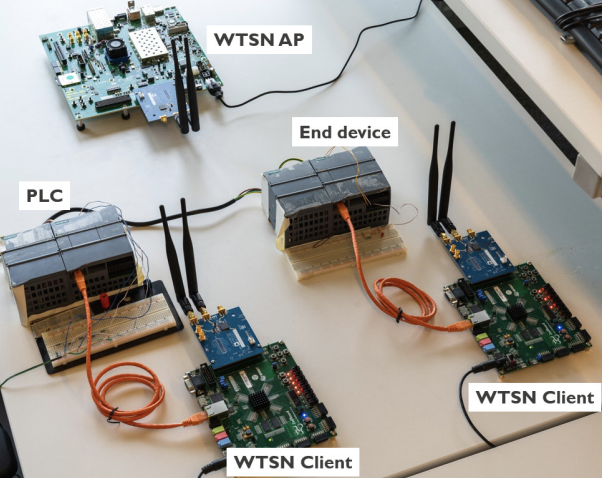Time slicing based on MAC address
Reserve some queues to send traffic to certain MAC addresses, and control the time share of those queues to perform custom network slicing.
Hardware timestamping
Hardware timestamping at Tx and Rx side with microsecond accuracy
Precision Time Protocol
Support for PTP at layer 3 and using boundary clock
IEEE 802.1Qbv time-aware shaper
A gated mechanism (time slot and cycle for EDCA queues), (dynamic) mapping of packets (DSCP values) to HW queues, set/get schedule and over-the-air schedule distribution
User-level in-band telemetry (INT)
Per-hop and end-to-end monitoring of (wireless) KPIs, application requirement sharing, feedback, INT mode selection (freq., probability, count), API for controlling INT
Time-triggered control over Wi-Fi features
Time-triggered configuration of following parameters: CSMA/CA, LBT threshold, NAV, DIFS/EIFS, CW, # ReTx, Tx digital attenuation, Tx/Rx freq. channel, Rx sensitivity
IEEE 802.11ah encapsulation
Encapsulation in user level to support connecting COTS devices to Wi-Fi STAs
Hardware timestamping+
Hardware timestamping at Tx and Rx side with sub-microsecond accuracy
Bootstrapping
Allow the association of new stations without impacting ongoing W-TSN traffic
Reliability & scheduling
Novel features in support of reliability and scheduling such as fast ReTx, flexible TxOP, DL C-SR, etc.
Precision Time Protocol++
Extended PTP capabilities including layer 2 and resilience against wireless channel errors
Coordinated beaconing/scanning & probing
Enable beaconing, scanning and probing without impacting W-TSN traffic, in order to support mobility
Scheduling
SW-based credit-based shaper, full OFDMA combined with TSN, μslots, slot-crossing protection, dynamic queuing, preemption techniques
Reliability
basic MLO (2 APs – 2 STAs), UL MLO FRER, full-duplex MLO, c-OFDMA
'25 Rel. 1
Available with the first release in 2025
'25 Rel. 2 / '26 Rel. 1
Available with the second release in 2025 or first release in 2026
'26 Rel. 2+
Available with the second release in 2026 or later
+ AGPLV3
Also available under free AGPLv3

